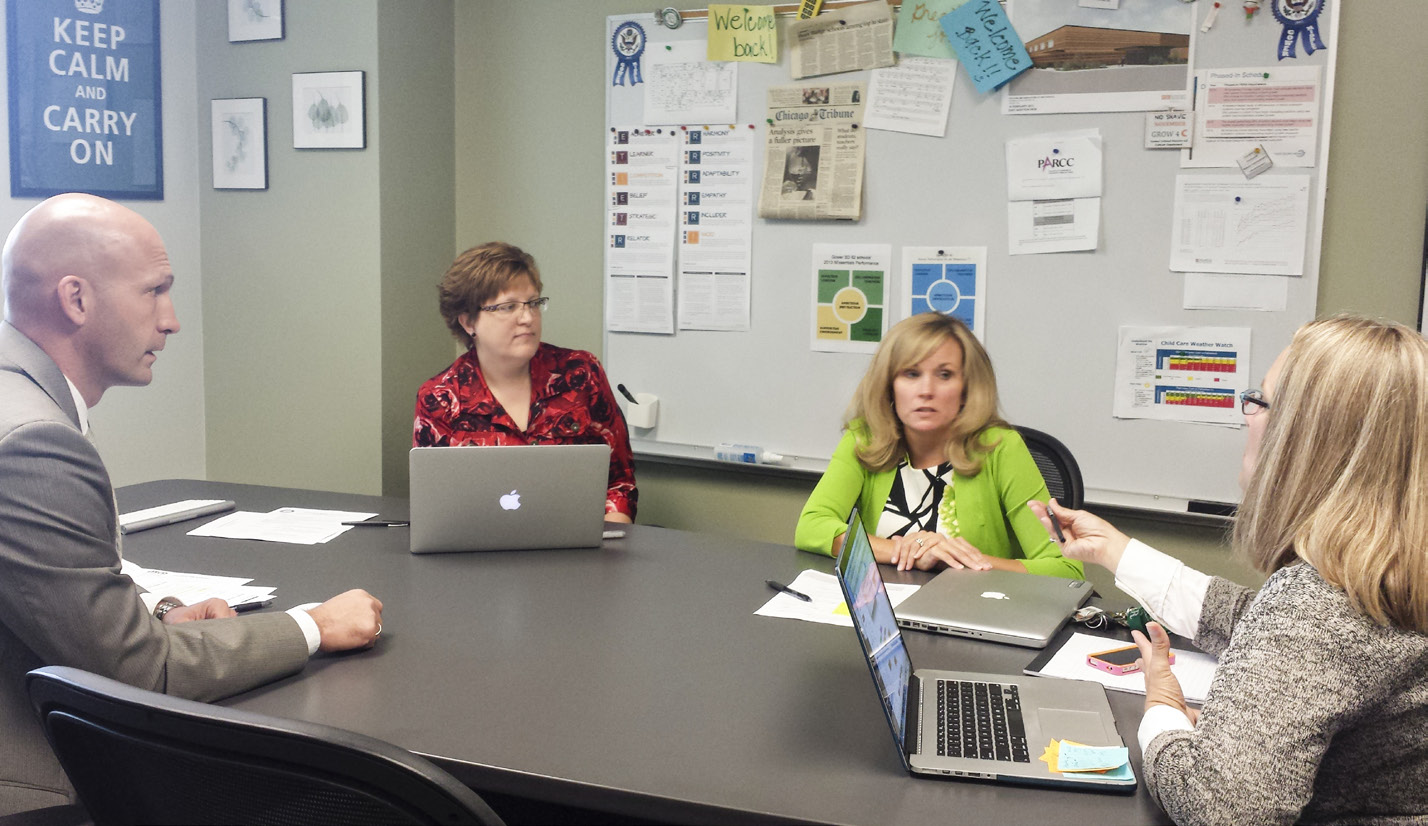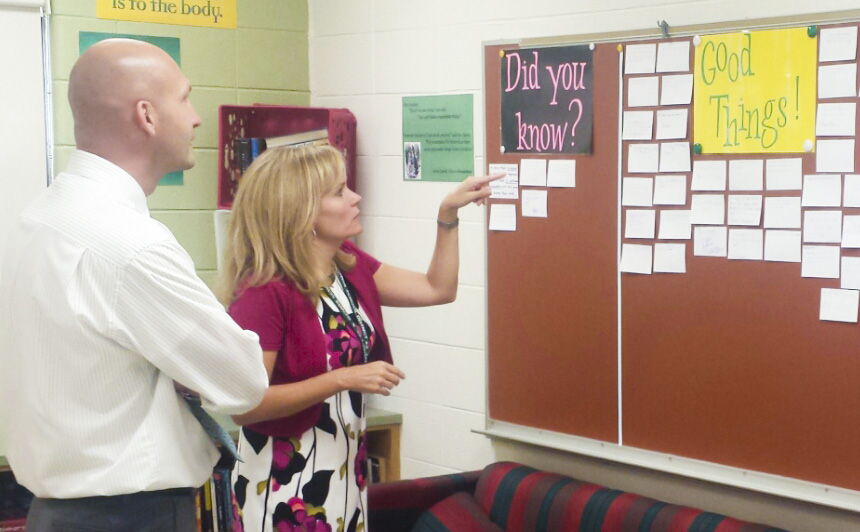5Essentials In Action: Gower School District 62
“A child's education isn't a dress rehearsal. We have one chance to get it right and the 5Essentials Survey helps keep us focused while holding us accountable.”
Victor Simon began using the 5Essentials as an elementary school principal in Chicago. Later, as a district network chief overseeing 31 Chicago public schools, he encouraged his principals to use the annual survey to focus staff on continuous improvement. Today, as superintendent of Gower School District in DuPage County, Illinois, a small, high-performing school district in Chicago’s western suburbs, Simon has found the tool just as powerful.

When it was time to convince his new staff of that power, and that they, too, could benefit from using 5Essentials data to drive school improvement, he tapped lessons learned from his Chicago days.
“It was clear that the status quo would need to be challenged if we were going to be successful in bringing about substantive change,” Simon said, recounting how he used 5Essentials and lackluster growth data at Dore Elementary School in Chicago to make his point to Local School Council members who saw no need for major change. “The 5Essentials data helped build a strong enough case to grab the collective attention of the organization.” From 2006 to 2011, Dore School proved to be one of the highest performing schools in the Chicago Public Schools system.
At Gower, Simon faced additional challenges. This time it came from his staff, who thought they had been doing just fine. In fact, they were doing well, but Simon felt they could do even better.
“Lots of school districts have administered climate surveys of their own, and Gower was no stranger to this practice,” Simon said. But what Simon said he liked about 5Essentials was that it helped principals align their improvement strategies to the very specific areas of development that the Essentials data identified for his particular district.
In Gower Middle School Principal Tracy Murphy’s first year using the 5Essentials survey, both she and her staff were surprised to find lower than expected scores in Supportive Environment. Scores were even lower in the sub-category of Student-Teacher Trust.
But that score—45 out of 100 for Student-Teacher Trust in 2012—reinforced the decision to adopt a Texas-based program called “Capturing Kids’ Hearts” to help the school staff foster more positive, productive, and trusting relationships with students.
Teachers and school staff now make daily, concerted efforts to make eye contact with students and develop personal relationships, greet them by name at the door every morning, and foster classroom sharing of “good things,” positive anecdotes recounting something that recently happened, among other strategies to build connections inside the school.
Soon, all teachers at Gower Middle would come to understand why researchers at UChicago’s Consortium on Chicago School Research identified Supportive Environment as one of five key pillars of a healthy, well-organized school.
“If students know you care about them, it makes everything else a little easier,” Murphy said. “It didn’t mean because we’ve been successful and are a Blue Ribbon school that we had to stop.”
The strategy paid off. Gower Middle’s scores on Student- Teacher Trust jumped to 68 in one year.
The school also experienced significant jumps in safety, from 68 to 90 in just a year’s time. Murphy said her staff didn’t make significant changes in that area, but that the more intentional culture prompted by the Supportive Environment scores changed overall perceptions of school safety, too.

“When you bring a new program in, you definitely have some teachers who buy in quickly, and others who say they’re not so sure. For my ‘not so sure’ people, this data was settling,” Murphy said. “When you have data to support why it makes sense to use it, assurances that you’re pointed in the right direction, that’s a good feeling.”
Success stories like these using 5Essentials data helps Simon invest available district resources in individual school strategies around 5Essentials.
Elliot Ransom, Director of the 5Essentials at UChicago Impact at the Urban Education Institute, says Gower’s approach embodies the true potential of the 5Essentials as a school improvement tool.
“At its core, the 5Essentials is designed to support schools’ continuous improvement efforts by providing actionable data and insights into what is going well and what can be improved. It is not a judgment of the quality of a school, but a guide to help the school grow stronger for the sake of its students.”
For Simon, the district’s “Plan-Do-Check-Act” approach to continuous improvement doesn’t end with a single round of survey data. The 5Essentials Survey allows Gower educators to keep an eye on the big picture while reflecting more specifically on what is working and what is not.
Just before the start of the 2014-15 school year, Simon sat down with his Leadership Team and reviewed their most recent 5Essentials scores. He made sure to use the opportunity to emphasize specific areas of strategic focus for the upcoming year.
“A child’s education isn’t a dress rehearsal,” Simon said. “We have one chance to get it right and the 5Essentials Survey helps keep us focused while holding us accountable.”



